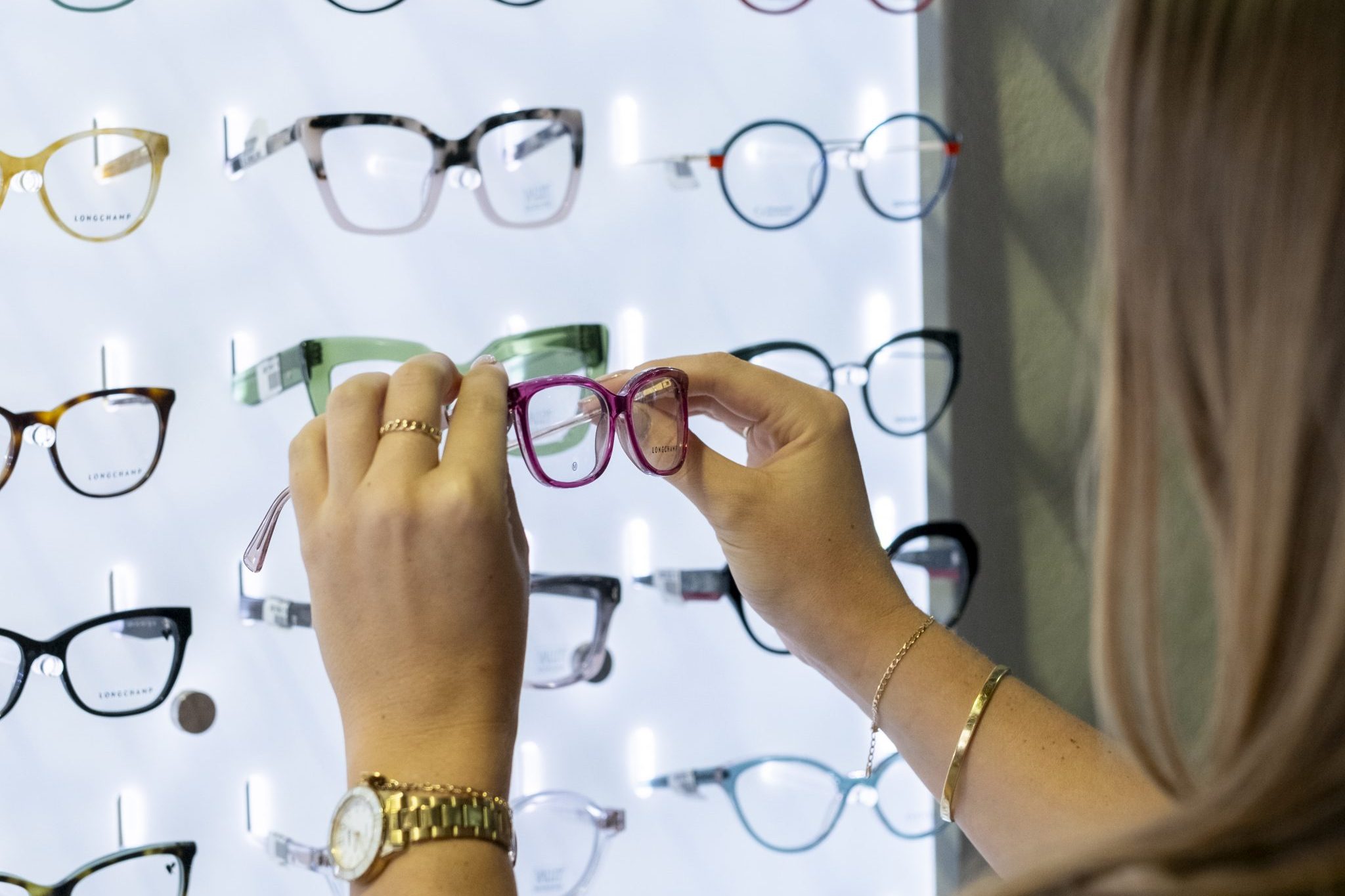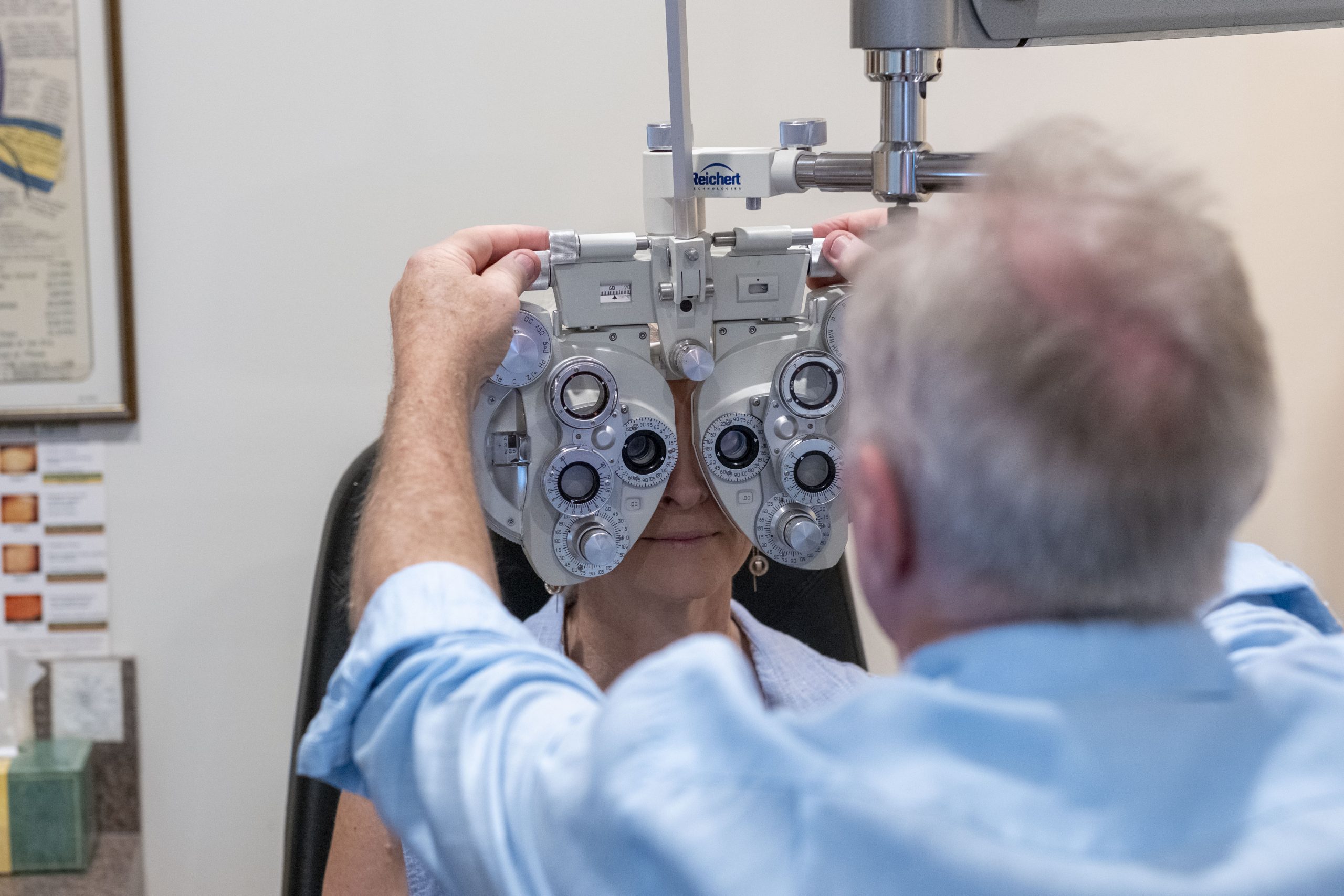It’s 2025 — your kids are joining a new cohort at school, trying different sports and learning new skills. Many parents, instead, are looking into their children’s eye health. As the Centre for Eye Research Australia reported, as many as one in five children have an undetected eye problem. That means thousands of kids may be struggling to read the whiteboard, follow along with their schoolwork, or even enjoy their favourite games — all without realising it’s their eyesight that’s holding them back.
With children spending more time on screens, less time outdoors, and learning in front of computers, our optometrists are increasingly observing the effects of environmental and social influences on kids’ vision. From myopia (short-sightedness) to digital eye strain, children’s eye exams are revealing new insights that are shaping 2025 kids’ eyecare trends in Australia.
If you’re wondering what this means for your household, our blog shares what parents need to know about kids’ eyecare in 2025. From what rising conditions you need to be aware of and what you can do to safeguard their vision — it’s time to start looking at your kids’ eyecare through a new lens.
Common Vision Conditions Facing Kids
Many kids’ vision problems remain undetected until they significantly affect learning or behaviour. These are the most frequent issues found in child eye exams:
- Myopia (Short-Sightedness): A condition where close objects are seen clearly, but distant objects appear blurry. The Australian Institute of Health and Welfare (AIHW) reported that 4.5% of Australian children experience Myopia.
- Hyperopia (Far-sightedness): A vision disorder where distant objects are seen more clearly than those nearby.
- Amblyopia (Lazy Eye): A developmental disorder where one eye fails to achieve normal visual acuity, often due to poor coordination between the eye and brain.
- Astigmatism: A refractive error caused by an irregularly shaped cornea or lens, leading to blurred or distorted vision at all distances.
- Digital Eye Strain: A temporary condition resulting from prolonged screen use, characterised by eye discomfort, dryness, and blurred vision.
Emerging Trends in 2025: Kids’ Eyecare in Australia
The landscape of children’s optometry in Australia is shifting. More children are experiencing eye strain, early-onset myopia, and dry eyes — conditions you would more often see in adults. But what’s driving this change?
- Screen Time Surge: A digital-first approach to learning, recreation, and socialising is becoming standard, with children spending up to 4-6 hours daily on devices. This has been shown to impact ‘typical’ vision development with increased rates of digital eye strain, a rise in early-onset myopia, and decreased blink rates, which can affect tear film stability.
- Reduced Outdoor Activity: Limited time outside has been directly linked to increasing rates of myopia. It also creates less opportunity for distance viewing, which is necessary for developing a balanced visual system.
- UV Exposure Risks: While outdoor time is important, Australia’s high UV index continues to pose a risk to unprotected eyes, even on cloudy days. Increased exposure can affect your children’s eye health, increasing the risk of photokeratitis, cataracts, and muscular degeneration.
- Overuse of Artificial Lighting: Excessive reliance on artificial lighting, especially blue light-emitting LEDs, can disrupt sleep and circadian rhythms, contributing to eye fatigue and strain.
- Increased Academic and Cognitive Pressure: Intensified academic workloads and competitive schooling can lead to longer periods of close-up work (reading, writing, coding), accelerating near vision dominance and contributing to myopia. Stress-related fatigue may indirectly impact visual focus and blink patterns.
While many contributing factors are putting pressure on children’s eye health, there’s a larger focus on how to improve kids’ vision in Australia in 2025. These include:
- Increased Public Awareness: Through early intervention programs and educating professionals who work with kids in identifying behavioural issues linked to vision issues, children’s optometry in Australia is changing, ensuring eye health is not left behind.
- Holistic Health Initiatives: Vision care in 2025 places a renewed focus on lifestyle factors that impact eye health, such as posture, sleep, diet and emotional well-being.
- Growing Availability of Children’s Eyewear: Encouraging infants and pre-teens to wear prescription glasses can be difficult at the best of times. Thankfully, lightweight and durable frames in an assortment of colours and prints are increasingly available to keep kids happy to wear them.
- Paediatric Wellness Checks: Many progressive health providers include kids’ eyecare into their more accessible service tiers, helping spot potential issues earlier.
Top Tips for Healthy Children’s Eyes for Australian Conditions
Whether you’re trying to bolster your kids’ eyecare or manage existing concerns, parents can take many proactive steps to promote healthy eyes. Here’s what optometrists recommend:
1. Manage screen time with intention
Digital learning, games, and social interaction are now part of everyday childhood — but unmanaged screen time poses real risks. To protect your child’s eyes:
- Apply the “20-20-20 Rule”: Every 20 minutes, encourage your child to look at something 20 feet (about 6 metres) away for at least 20 seconds.
- Maintain an Ergonomic Setup: Screens should be at or slightly below eye level and positioned about an arm’s length away.
- Avoid Using Screens in Dark Rooms or Before Bed: The high contrast and illumination of a device’s screen and exposure to blue light can disrupt the body’s natural production of melatonin, contributing to eye strain and sleep issues.
- Set device-free zones or times: Using devices during meals or before bedtime can create unhealthy habits and an overreliance on devices, which strains eyes in the short and long term.
2. Encourage daily outdoor play
A top eyecare trend in 2025 for Australian kids — absorbing vitamin D through natural light is essential for overall health, regulating eye growth, and preventing myopia. Research consistently shows that:
- At least 90 minutes outdoors per day significantly reduces the progression of myopia.
- Outdoor activity allows for distance focusing, balancing the effects of prolonged near work like reading or screen use.
- Natural UV exposure (while wearing sunglasses for protection) also helps stimulate dopamine production in the retina, which regulates eye elongation—key in controlling short-sightedness.
3. Nourish their vision through a balanced diet
What your child eats directly influences their eye health. Encouraging children to eat a colourful variety of whole foods is one of the most effective and sustainable tips for healthy children’s eyes in Australia, helping support retinal function, prevent oxidative stress, and maintain tear film quality. Key nutrients you might want to include are:
- Omega-3 fatty acids found in salmon, flaxseed and walnuts can help reduce dry eyes and support visual development.
- Lutein and zeaxanthin, found in leafy greens like spinach and kale, can help protect against light-induced damage.
- Vitamin A from carrots, sweet potatoes and eggs can improve low-light vision and eye surface health.
- Zinc and vitamin C support retinal health and tissue repair.
4. Choose quality eyewear and sunglasses
Protecting children’s eyes from UV radiation is critical. Whether it’s the middle of summer or a cloudy day — even in snowy conditions, fresh powder can reflect the sun’s rays and potentially cause cumulative damage from a young age. Here’s what you should prioritise:
- Invest in sunglasses with 100% UVA and UVB protection, ideally labelled ‘category 3’ for Australian standards.
- Prescription glasses should include anti-reflective and blue light filtering coatings for kids who use screens regularly.
- Prioritise comfort and fit. Children are more likely to wear glasses and sunglasses that feel good and reflect their interests. Allowing your kids to choose their eyewear helps them feel involved, which can encourage them to wear them consistently.
- Visit Shire Optometrists for a tailored fitting, ensuring they can maintain secure, comfortable and all-day wear, especially if your child plays sports or has sensory sensitivities.
Eye Tests: What Parents Need to Know About Kids’ Eyecare in 2025
From lifestyle factors to eye conditions where there is a family history, many vision problems may be asymptomatic and go undiagnosed before they show more serious signs of vision degradation. On the other hand, if teachers have reported they’re distracted in class and have trouble understanding course content, poor vision can often be the culprit. Without an eye examination, it’s too easy to confuse poor sight with not focusing in class.
Ages your child should have an eye test:
- 6 Months to 1 Year: Assess colour vision, depth perception and focusing ability
- Age 3: Test for amblyopia, retina health and eye alignment.
- Age 5-6: Assess their vision skills, checking their ability to see at various distances, ensuring they’re ready to perform at school.
Routine child eye exams are foundational to long-term vision health. Shire Optometrists recommend regular vision screenings and eye examinations every one to two years to maintain your kids’ eyecare and intervene early should issues arise.
Protect Your Kids’ Vision — Book an Eye Test Online Today
Ensuring your children’s eye health isn’t something you can delay until they’re older or it’s needed — it’s essential. With their sight playing a central role in learning, development, and confidence, early intervention and ongoing care can make all the difference.
Book an appointment at on of our four conveniently located practices across the Shire. Our team of optometrists offers personalised, child-friendly consultations that make eye tests easy, informative, and reassuring for you and your little one. Our team can recommend the best course of treatment if needed — whether that includes prescription glasses, contact lenses, or specialised lenses that manage their vision needs and are easy for you and your child to follow every day.
As shared by Eyecare Plus on 15 Mar 2025.


